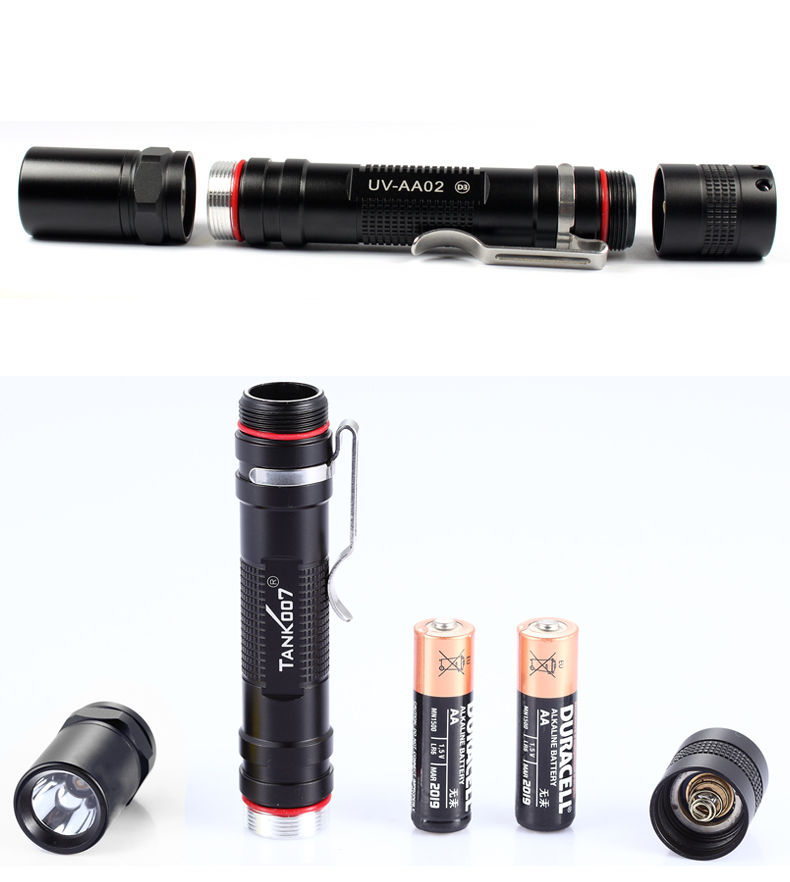
Since their development in 1999, LED lamps are more products than ever before, including flashlights, and they continue to gain market share over incandescent lamps. Many people do not know why LEDs have a competitive advantage, especially if the bulbs are used in the compact electronics such as flashlights. Buyers need to understand the many reasons why LEDs a better investment than other lighting options.
LIGHTING themselves offer greater efficiency than incandescent bulbs found in other flashlights. Where a light bulb average of six hours of continuous use, offering features a flashlight LED lamp whopping average 50,000 hours of continuous use. For those who regularly use flashlights for night time activities, such as fishing or hunting, offers an LED flashlight a much longer lamp life thanks to lower energy consumption. it is important to note that, white LEDs can produce about 100 lumens per watt compared as to 9 lumens per watt for an equivalent incandescent lamp
LED flashlights can also be used to power battery works to use more efficient than incandescent flashlights. The average lifespan for continuous use for a flashlight using bulbs in the two-hour range, while the batteries in flashlights with halogen lamps tend to last around nine hours with continuous use. LED flashlight batteries blow away the competition, lasting an average of 90 hours of continuous use…
LED flashlight bulbs have sturdier construction than other types of sensitive flashlight bulbs. They have a plastic housing which is resistant to the impact of drops, vibration, and even wide variations in temperature. A light bulb is made of glass and required fine filaments. An LED lamp is a solid-state device with a chip placed safely in the plastic casing, making it the ideal light for a portable tool such as a flashlight.
Each type of LED flashlight provides an accurate light output, expressed in the lumen. The intensity of the light from the highest setting of the brightness is how lumens are measured. For example, the average LED keychain flashlight emits choose from 1 to 20 lumens, while a high-powered outdoor LED tactical flashlight or used for the exploration of the cave emits 1000 lumens or more. Buyers need to consider how and where they intend to use their LED flashlights before choosing the lumen levels they need. Fortunately, there are plenty of light emitting diodes options can be found in applications in many fields such as aerospace and automotive lighting, advertising, general lighting and lamps for traffic signs. LEDs have allowed new text, to be developed live video, video displays, and sensors. The high switch LEDs are also useful in advanced communications technology. Infrared LEDs can be found in the remote controls of various consumer products such as TV, DVD players, washing machines and other household electronics and appliances
LED flashlights are more expensive than their incandescent counterparts, and most do not come with replaceable bulbs, which means when the LED fades, to be replaced the perfect flashlight. A mini LED flashlight costs almost as much as a full-featured tactical flashlight with a light bulb. Many consumers shy away from the high price tag; the initial investment is linked. In reality, LED flashlights cost less over time. A rarely used household LED flashlight can last for decades and never need a new battery. Although the lamp is not replaceable, the probability is good that outlasts of the housing.
UV Torch | UV Light Flashlight | Police Flashlight | UV Flashlight Black Light | LED Flashlight Wholesale | UV Flashlight
Copyright 2002-2022 Shenzhen Grandoor Electronics Co., Ltd. (Tank007)粤ICP备10078715号